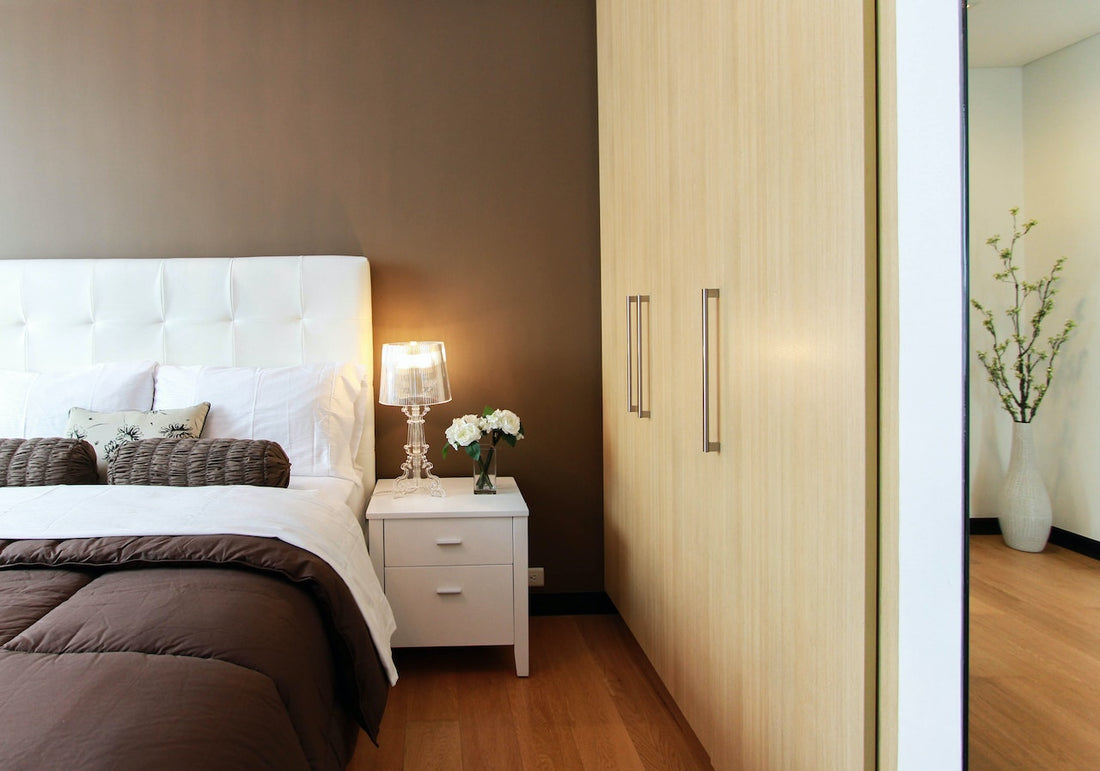Getting a good night's sleep is essential for our overall health and well-being. However, many of us struggle to fall and stay asleep, often due to factors we may not even realize, such as the colour of our bedroom walls.
The colours we choose to paint our rooms can have a significant impact on our sleep quality, affecting our mood, relaxation, and overall comfort.
In this blog post, we will explore the best and worst room colours for sleep. We will also discuss other factors that can affect sleep quality and provide tips on how to create a bedroom that promotes a good night's rest.
So if you're someone who struggles with sleep or wants to optimise your bedroom for better sleep, read on to learn about the impact of room colour on your sleep quality.
Best Room Colours for Sleep
If you're looking to improve your sleep quality, consider using cool, calming colours in your bedroom. These colours can help create a relaxing environment that promotes sleep and relaxation.
Blue
Blue is known for its calming properties, which makes it an excellent choice for a bedroom. Studies have shown that blue can help lower blood pressure, heart rate, and even reduce anxiety, all of which can lead to a better night's sleep.
Green
Green is another great colour for promoting relaxation and reducing stress. It's associated with nature and can create a sense of calm and tranquility. Green has also been shown to help with reducing anxiety and improving mood, which can lead to better sleep.
Grey
Grey is a neutral colour that can be used to create a calming and soothing atmosphere in a bedroom. It can help reduce stress and promote relaxation, making it an excellent colour choice for a sleep-friendly bedroom.
To incorporate these colours into your bedroom, consider using them on your walls, bedding, or accent pieces. Soft shades of blue, green, or gray can help create a peaceful environment that promotes sleep and relaxation.
Keep in mind that while cool colours can be great for promoting sleep, it's also essential to balance them with warm accents or textures to create a cozy and inviting atmosphere.
Additionally, it's important to choose colours that resonate with you personally, as individual preferences and associations with colours can also affect their impact on sleep.
Worst Room Colours for Sleep
While some colours can promote relaxation and sleep, others can have the opposite effect, stimulating the senses and making it harder to fall asleep.
Red
Red is a bold, stimulating colour that can increase heart rate and blood pressure. It's not an ideal colour for a sleep-friendly bedroom, as it can make it difficult to relax and fall asleep.
Orange
Like red, orange is a warm, energizing colour that can stimulate the senses and make it hard to unwind. It's best to avoid bright shades of orange in the bedroom, as they can interfere with sleep quality.
Yellow
Yellow is a bright, cheerful colour that can be energizing during the day, but it's not an ideal choice for a bedroom. It can be overstimulating and make it harder to relax, leading to poor sleep quality.
While it's best to avoid bright, bold colours in the bedroom, you can still use warm accents or tones of these colours in moderation. For example, a muted shade of red or orange can be used as an accent in a sleep-friendly bedroom.
However, it's important to keep these accents to a minimum and balance them with cool, calming colours to create a peaceful environment that promotes restful sleep.
Other Factors that Affect Sleep Quality
While room colour can have a significant impact on sleep quality, there are other factors to consider when designing a sleep-friendly bedroom. Here are some other factors that can affect sleep quality:
- Lighting: The amount and type of lighting in a bedroom can affect our sleep quality. Exposure to bright light at night can disrupt our circadian rhythms, making it harder to fall and stay asleep. Consider using blackout curtains, dimmer switches, or low-wattage bulbs to create a dark and peaceful sleep environment.
- Room temperature: The temperature of a bedroom can also affect sleep quality. Experts recommend keeping the room between 60-67 degrees Fahrenheit for optimal sleep. Adjust your thermostat or use a fan or heater to maintain a comfortable sleep temperature.
- Clutter: A cluttered bedroom can create a stressful and distracting environment that interferes with sleep quality. Keeping your bedroom tidy and organized can help create a peaceful and relaxing space that promotes restful sleep.
- Mattress and bedding: The quality of your mattress and bedding can also affect sleep quality. Invest in a comfortable mattress and organic bamboo bedding to create a comfortable and inviting sleep environment.
By optimising these factors in your bedroom, you can create a sleep-friendly environment that promotes restful and restorative sleep.
Remember, the goal is to create a relaxing and peaceful space that promotes relaxation, so consider all factors that can impact sleep quality when designing your sleep sanctuary.



